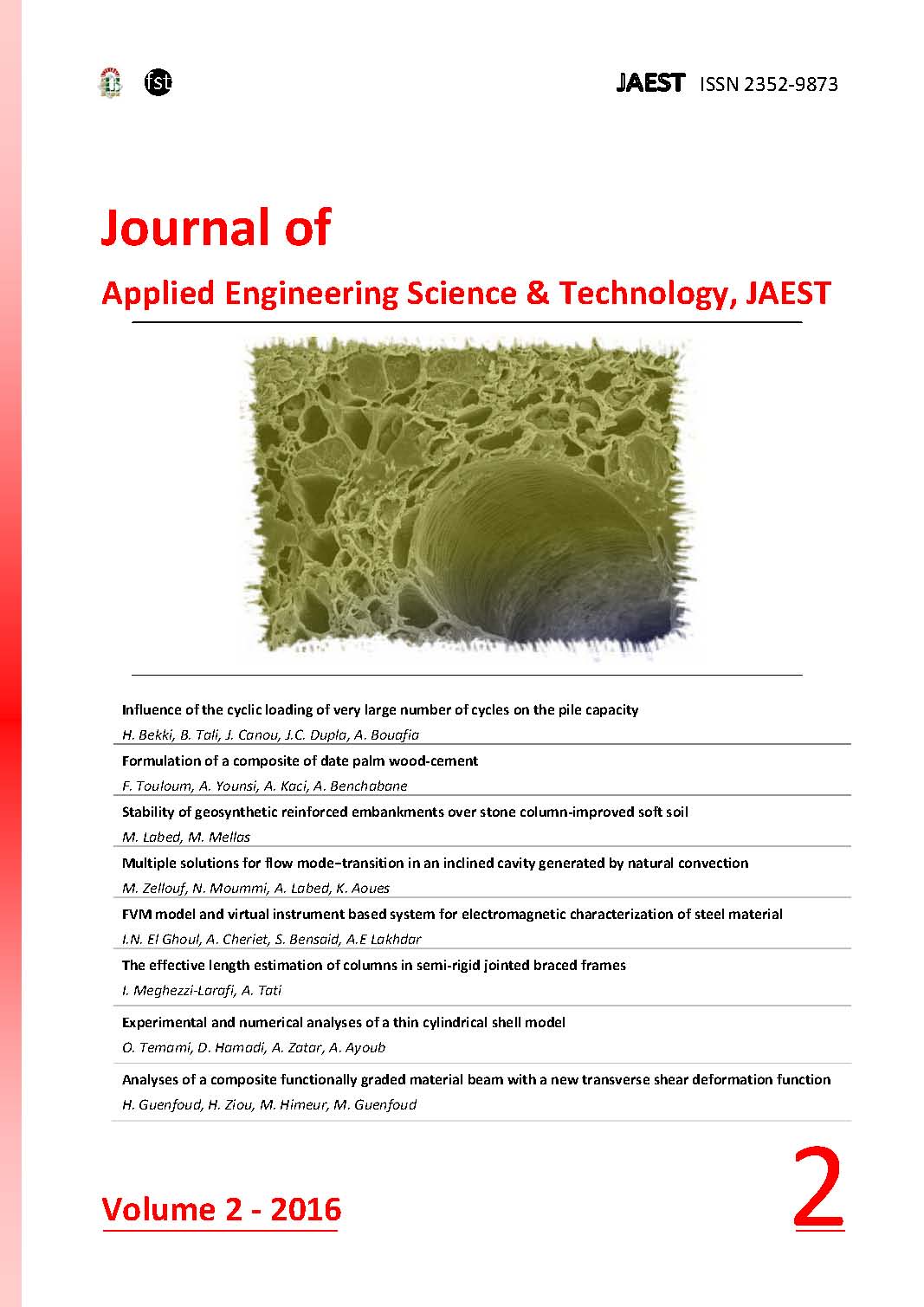Experimental and numerical analyses of a thin cylindrical shell model
DOI:
https://doi.org/10.69717/jaest.v2.i2.39Keywords:
Experimental test, Cylindrical shell model, Flat shell element, Numerical analysisAbstract
The analysis of thin shell structures is generally based on theoretical principles. The
experimental tests on this type of structure are important for understanding the effect of loading
and the geometrical shapes on its mechanical behavior. In this paper, an experimental test of a
cylindrical shell under the effect of concentrated static loads is presented. A comparative
numerical study is carried out by using two finite elements: the first element called ACM_RSBE5,
recently formulated, and the second one, S4R, of ABAQUS code are used for the study of thin
shells. The experimental results are compared with those obtained numerically. The results of both
elements, ACM‐RSBE5 and S4R, are in agreement with those obtained experimentally. The
efficiency and the importance of the approach of the flat shell element for thin shell structures are
confirmed.
Downloads
Downloads
Published
Issue
Section
License

This work is licensed under a Creative Commons Attribution-NonCommercial 4.0 International License.













